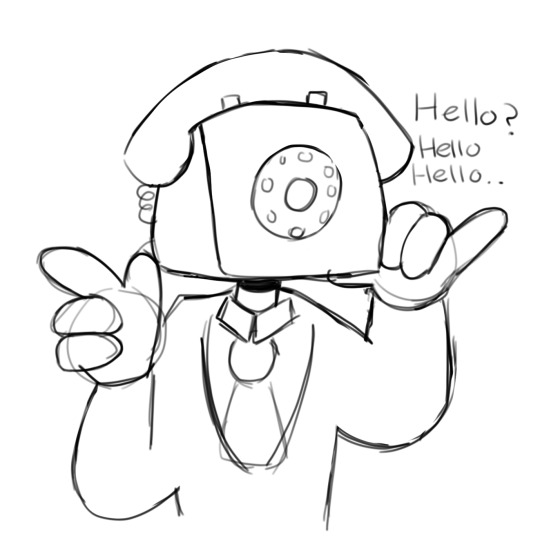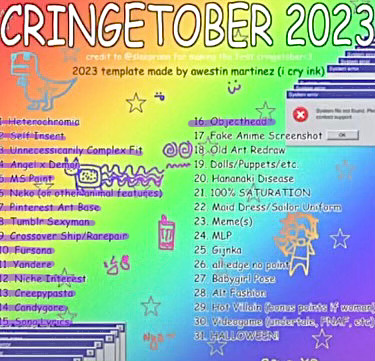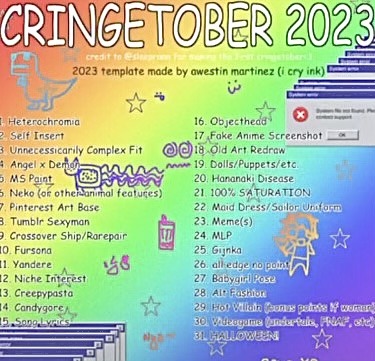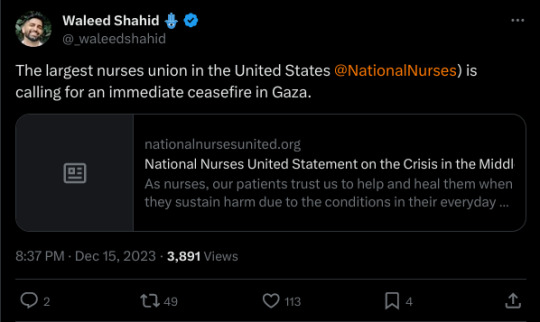#nnu
Explore tagged Tumblr posts
Text
I don't see posts about this on here so here's a link to the current petition by National Nurses United urging the CDC to reject the recently approved draft by the Healthcare Infection Control Practices Advisory Committee to the CDC to weaken infection control standards.
If these standards go through preventable infections will increase for both patients and healthcare workers, which would be bad enough even if we weren't in the middle of a pandemic.
#death panel podcast did a good episode about this earlier in the year btw#cdc#hicpac#covid#nnu#national nurses united#covid isn't over
9 notes
·
View notes
Text


5 notes
·
View notes
Text
Day 16: objecthead
Hello hello?




#cringetober 2023#cringetober#cringe#phone guy#phone guy fnaf#Fnaf phone guy#five nights at Freddy’s#fnaf#fanart#hello hello?#he was fun to draw#not on time again but at least I findihed on time?#I blame unus annus this time cause they sucked out all my energy#I miss hnus nnus#anyway#screams#explodes
13 notes
·
View notes
Text
Also preserved in our archive
— HICPAC supports surgical masks for airborne pathogens, sick workers returning after 3 days
With Democratic administrations like these, who needs Republicans?
by Sophie Putka
Members of the Healthcare Infection Control Practices Advisory Committee (HICPAC) voted Friday to defend what some have called weak standards of infection control for healthcare settings, agreeing nearly unanimously that surgical masks provideopens in a new tab or window adequate protection against airborne pathogens, and that sick healthcare workers may return to work after 3 days of viral respiratory symptoms without testing.
The meeting centered largely on written responses to CDC questions pushing backopens in a new tab or window on draft guidelinesopens in a new tab or window to prevent transmission of pathogens in healthcare settings, and on proposed updates to a section of a separate guidelineopens in a new tab or window for infection control in healthcare personnel from 1998.
HICPAC, which advises the CDC and HHS on infection control practices, has faced an outcryopens in a new tab or window from some healthcare workers and occupational health experts since the beginningopens in a new tab or window of its guideline revision process in 2023. Critics have condemned the proposedopens in a new tab or window infection precautions as woefully inadequate for protecting healthcare workers and patients, and called for more transparent processes, along with input from those representing their concerns.
HICPAC has since made adjustments, such as adding members to its voting contingent and workgroup. This includes two leaders from a group that has been among its loudest critics, National Nurses United (NNU): Lisa Baum, MA, the lead occupational health & safety representative at the New York State Nurses Association, an NNU affiliate, and Jane Thomason, MSPH, lead industrial hygienist for NNU. Baum is one of 11 HICPAC voting members and Thomason serves on the HICPAC workgroup.
Despite the concessions, HICPAC voted to approve language that kept the recommendationsopens in a new tab or window largely the same. Though HICPAC's guidelines are not mandatory, most healthcare employers use them to guide their infection control practices.
Michelle Gutierrez Vo, RN, president of the California Nurses Association/National Nurses Organizing Committee, an affiliate of NNU, told MedPage Today, "We're not surprised, you know, it's not something that we thought was going to be easy. But it doesn't deter us." "They need to be preventing illness, and they need to be sitting at the highest level to make sure that people don't get sick," Vo added. "And if they don't do that, then they're failing."
Vo and others noted that HICPAC's members are largely administrators and managersopens in a new tab or window from institutions including academic research centers and health departments, but also hospitals and health systems with a vested interest in keeping costs down. Throughout the deliberations, Baum stood in stark contrast to the rest of the HICPAC members, arguing for stronger language, and was nearly the sole "disapprove" vote in all six of the items voted on.
Defending the Draft CDC asked four key questionsopens in a new tab or window about the isolation precautions guidance when it sent the draft back to HICPAC earlier this year. For the first question, members approved language stating that "N95 respirators should not be recommended for all pathogens that spread by air."
As for the draft's "routine air precautions," it recommended the use of "masks" -- including surgical masks -- for "common, often endemic, respiratory pathogens that spread predominantly over short distances."
To a question about voluntary use of N95 respirators by healthcare staff, the workgroup voted to respond, in part, that the guideline should not include this as a direct recommendation. Language that "clearly supports the concept of voluntary use of N95" masks should be left in the "narrative" portion of the relevant section, the group decided.
Finally, the workgroup responded that a blanket recommendation for source control -- the use of masks to prevent transmission of pathogens from the mask-wearer -- was not needed.
As for the healthcare personnel guidance, HICPAC recommended workers stay home for 3 days after the onset of a confirmed or suspected respiratory virus, returning if they are fever-free for 24 hours, have improving symptoms, and "feel well enough to return to work." After the return to work, they should wear a mask until day 7 from onset.
This decision came after reviewing data compiled from a number of studies, from which the workgroup estimated that most viral transmission occurs within the first 5 to 7 days of the primary case.
Public Pushback Noticeably frustrated public commenters called for universal masking in healthcare settings, better evidence reviews, and stronger protections for healthcare workers and immunocompromised people. "Who's going to send the memo to all the firefighters that they should start using surgical masks for wildfire smoke? [Or] to the lab workers that work with other infectious diseases like tuberculosis, bird flu, or whatever else pops up that can spread by the air?" asked Shea O'Neil, a volunteer at the World Health Network and Air Support Project. "Just let them know to put down those coppers and N95s and throw on a baggy blue surgical mask, because it probably works just as fine."
"It's a risk you all are willing to take today, and somehow you've been put in this position to decide for us. That's not the precautionary principle," O'Neil said, calling for N95 respirators or better as a standard precaution.
"If folks are symptomatic, then they should be home [until] they're not symptomatic -- 3 or 5 days does not handle the issue," said commenter Don Ford, a COVID-19 safety and long COVID advocate. "I hear the committee discussing what is best for hospital management when your role is to determine what is best healthcare practices. The group is not called 'hospital management practices.' It's Health Infection Control Practices Advisory Committee."
#HICPAC#covid#covid news#mask up#public health#wear a mask#pandemic#wear a respirator#covid 19#still coviding#coronavirus#sars cov 2#long covid#covid conscious#covid is airborne#covid pandemic#covid isn't over#covid19#covidー19
8 notes
·
View notes
Text
Oh, how the turns have tabled.
John is such a nice potato, while Arthur is a massive crastu spiritatu senza scienza, nnu bbirduni piemontisi ladiu ammilinatu #@u *#@#
10 notes
·
View notes
Text

National Nurses United Statement on the Crisis in the Middle East As nurses, our patients trust us to help and heal them when they sustain harm due to the conditions in their everyday lives. To honor that sacred trust, it is our duty to speak up for every human being’s right to a life free from violence and the traumas of war. As patient advocates, we are horrified by the mass killing and brutal violence that is happening in Israel and Palestine. We condemn the atrocities perpetrated by Hamas which led to the deaths and kidnapping of more than a thousand Israeli civilians. We call for the immediate release of all civilians still being held hostage. We condemn the massive attacks from the Israeli military that have killed more than 11,000 civilians in Gaza, and have devastated the health care system. We grieve all the lives lost in these indefensible tragedies. Nurses believe that our patients and their families have the right to health care and to the necessities required to sustain life and health. The siege imposed by the Israeli army has prevented civilians in Gaza from accessing necessities including food, water, electricity, fuel, and life-saving medical supplies, while also preventing the safe movement of civilians currently trapped in Gaza. The resulting humanitarian crisis endangers the health and wellbeing of millions of civilians. Further, the bombing and destruction of critical health care infrastructure in Gaza is a violation of international law, and puts the lives of patients, nurses, and other health care workers at risk. Nurses are no strangers to caring for patients in traumatic situations. But we know that we cannot provide the care we are educated and called to provide for people who entrust their lives to us when we do not have even the most basic supplies and infrastructure, and when we don’t know whether our patients and we nurses ourselves are safe at work. We stand in solidarity with the nurses and health care workers in Palestine and in Israel as they work to provide care in a time of crisis, under conditions that do not support health and healing. National Nurses United calls for an immediate ceasefire, delivery of humanitarian aid, release of all hostages, and an end to this violence. We urge all parties to protect human life and the health and wellbeing of civilians in both Israel and Palestine. To support the humanitarian efforts in Gaza, NNU has made a donation to Doctors Without Borders/Médecins Sans Frontières.
35 notes
·
View notes
Note
My, myyyy! I'd love if you could give a try to my Cotl Oc then x3 Albeit, if not in the mood for him, could you perhaps do more Pan and little Lambert owo?
Said Oc nnU




We love rams in this house o7
49 notes
·
View notes
Text
And now for something a little different:

(Yes, this is what I’ve been working on for the past while.)
For context:
The story of the Golden River—’Onochok in Kochachi, Kingawa in Nikkeijin Japanese—with its five rivers, its seven great cities, its many-buttressed buildings and sacred isles—is a complex one, as is the story of the Nikkei-jin, the Japanese settlers who became the greatest rivals of the people of the Bay. But they are not alone, in the story of this continent. Nor can what happened to them truly be divorced from events elsewhere in the known world.
The continent of HESPERIA lacks much in the way of domesticable animals, but there was one key exception—camelops celeris, which the Bay would call ’espeli (plural ’espelik) but most of the world would come to call nayoomee. Large and llama-like, the nayoomee would provide meat, wool, and perhaps most importantly a suitable mount. Camelops c. occidentalis, the variant found on the western coast of Hesperia, would come to be used by the ancient Hokan pastoral peoples, giving them an edge against the Yok-Utian agriculturalists…at least at first. It would also give the ancient Inawemaaganic [Algonquian] tribes on what another history would call the Columbia Plateau a key boost in their expansions across the continent to the west.
It is with these people—or with a descendant people, the Nnu [Mi’kmaq]—that the next stage of the story takes place. Because in the year 1000, a ship came from the northeast of the world, bearing warriors from a faraway land, a strange faith, strange new animals—and strange diseases. Smallpox in particular did a lot of damage—tore the Wóšnathípi Empire to pieces, ended the cult of the Bird-Men, nearly destroyed the power of the Turtle Cities of the Great Lakes, and left piles of burning corpses brightening the night in the Bay, among other effects. Key to all this, though, is that the people of the urban civilizations of Hesperia survived. And those who did now had a boost against the sicknesses of the Other World.
The story continues in 1251, when a group of Tau raiders—whom another history would call the Inuit—made their way across the Strait and traded with Japan and China. North China, anyway; the Mongol Conquest was still ongoing at the time. Unfortunately, the Tau brought a disease of their own with them, which English speakers would come to call alcom: a herpesvirus causing diarrhea, spots, and febrile seizures, and then, as little as four months or as much as five years later, inflammation of the body—including fatal encephalitis. It was this sickness, also called the Red Death, which among other things stopped the Yuan from getting all the way south, saved the city of Baghdad (by forcing a recall of the armies), ensured the presence of Christian kingdoms in Palestine and Muslim principates in Iberia for centuries to come, and meant that the population had already dropped by a full fifth across Eurasia when bubonic plague came along not too long later.
It would be a much more haggard, somewhat more fervent, world which was set to unite in 1485, when Kuroda Kiyoshi, frustrated at the Mongol omnipotence in trade, was granted permission by the Emperor Go-Tenji (Yamahito) to seek an alternative trade route with the faraway land of Europe. After being at sea for thirty-nine days, on the fortieth they came to a great bay, filled with sacred islands and surrounded by cities of stone and mud.
In keeping with a time-honoured tradition across the multiverse, he deemed it France.
***
Hesperia will have had three and a half thousand years of recognizable “civilization” (large-scale agriculture, cities, literacy, metallurgy, epidemic disease, war) by the time the worlds collide. The countless cultures to have risen and fallen in that time could fill a book—and in this world and ours they already have. But for simplicity’s sake, let us divide the world into six portions.
KAWIINI, the “centre-world”, marks the western coast of the continent, along the edge of the Assinotie Mountains (which another history would call the Rockies). This is where the nayoomee was first domesticated; this is where tule reed was first stamped into paper scrolls; this is where the first outbreak of alcom occurred; this is where one of the continent’s three major religions, HOYOHHA, would develop. The region of Lokloni, the “Great Valley”, contains four great powers constantly one-upping each other in trade and warfare. The KOCHACHI, whom another history would call the Miwoks, hold sway here, the Earth-King and Water-King in Hulpu-Mni (our Sacramento) controlling the massive river valley to the north and (more importantly) four of the Seven Cities around the Bay. The other powers worth mentioning are the SHUURVITAM [Tongva and nearby Takic peoples] to the south, whose great city of Iyáanga would later be described as a “Babylon in Paradise”, and the TAU, Hesperia’s first intercontinental empire.
TUUWAQATSI is slightly to the east, in the Assinoti Mountains themselves. Cliff-cities were being built here before almost anywhere else on the continent; the arrival of the nayoomee, and more importantly domesticated bighorn sheep, did wonders for the local economy, as did goosefoot and sunflowers and, later, maize, beans, and squash. Currently most of the land—and a good chunk of the plains to the east—is under the control of the TINTA IMPERIUM, whose dominant inhabitants call themselves the Nemi and are called the Shoshone in our timeline. Of mention are the DINÉ, the Navajo, who have maintained a reasonable presence despite the efforts of the Eight Mayors, and the ÂSHINI [Zuñi] and HOPI, both of whom are considered de facto independent peoples within the Tinta Imperium thanks to the prominence of their cities.
ÑÍTA is what our world would call the Mississippi River Basin, with much territory on the eastern coast and the western plains; perhaps it would be fairer to call it the home of the Mississippian Cultures instead. Here grow sunflowers and goosefoots, amaranth and squash; here a species of dwarf bison was domesticated for meat and wool, becoming immensely valuable; here rose the cult of the Bird-Men, in recent centuries overthrown. Currently the ancient city of Omašté, ruled as ever by the ancient WAPKÁTXUNGWANG (called the Lakota in our own timeline), has recovered most of its former territories after the Scabbing (smallpox epidemic). But further to the south the OKLA (Choctaw) have begun spreading their own faith, HVSHI ANOWA, along with their Horsemen, uniting the Riverlands by something other than mercantile cunning or brute strength. Ugedaliyv, homeland of the ANIYVWIYA’I [Cherokee], has broken away, seemingly for good—so long as the Ongweh’onweh (Iroquois) don’t make a move in their direction. And as always, there are the SEA COUNTRIES: Aphópkee, Hótvlee-Tv’lwv, Chitkohòki, and Kuht’hanut, caught between too many powers and just wanting a relatively quiet life.
AKIIWAN is actually a ridiculously large region, from the Atlantic to the Arctic, and almost all of it is Cree. NĒHIRAW, that is; they are perhaps the oldest continuous INAWEMAAGANIC culture, keeping to their ancestral patterns of semi-nomadic migration from buried city to buried city, all across the northern grasslands and into the taiga. But although the largest, they’re by no means considered the most influential. No, that would be the circuits of GAMEEN, the land around the five Great Lakes which would come to be known as Gameen in time. The BII’WEG, our Ojibwe or Anishinaabeg, were the first to domesticate lake rice, and the first to smelt arsenic bronze, and the second to adopt ironworking. Their main religion, NANDOWIN, has spread far across the continent; most of the Nēhiraw have synchronized to it, and even the arrival of the Vinlanders couldn’t stop the NNU from seeking the Answers they wanted. The VINLANDERS themselves have all but fully integrated into Nnu society; both their language and that of the Nnu are spoken equally at the great Althing in Kyrvik/Welta’qase’g (and most places have two names, too). Their trading (and raiding) empire stretches as far north as Nucho, Baffin Island in another time, and as far south as the Bawa Sea. And they’ve come at last to an uneasy truce with the Bii’weg, at least until the whole mess with the ONGWEH’ONWEH [Haudenosaunee] is sorted out.
The tropical BAWA SEA has long been dominated by the TAÍNO, whose ship-building has moved from dugout canoes to junk-like ships with cotton sails and mahogany hulls. The cacicazgos of the four main islands have a strict policy of peace on land. …and technically on water, too, but normally they just end up hiring Huasteca, Carib, Tupi, Okla, or Vinlandic pirates to capture each others’ ships. Captured Taíno are ransomed; captured pirates are sold, or brought back to work on plantations. For the Taíno, thanks to the Tupi, are now Hesperia’s main source of KYE, an extract of stevia rebaudiana up to 300 times sweeter than sugar. People in the north will pay a small fortune for the chance at even a taste; it is small wonder that when Malinese explorers come this way, they will name it the Digeji—the Sea of Honey.
ANAHUAC is a world of its own. The NAHUA peoples made their way south some time ago, riding nayoomee and herding peccaries through the desert and introducing steeds and sickness alike to the various civilizations to the south while pinching the secret of bronze from the Purépecha. These days, the Nahua—or more precisely the MEXICA—rule a decent chunk of the country that would in another world (and another time) be called Mexico, under three great kings on their island city of Nopalla. The only real contenders are the ZAPOTECS and MIXTECS, who remain among the few places the Mexica have not been able to bring under tributary sway, and the MAYA, disparate jungle city-states who survived the plagues and general collapse and have begun trading chocolate and jade with the Taíno to the north and the Tupi to the south. The Mexica are known historically for their logistics, nayoomee being excellent tools for message delivery, but in the past few decades the capture of human sacrifices has been getting a little too much for subject people who can’t understand why they don’t just eat their giant dogs instead. Still, it’s not all bad; perhaps it just needs some shaking up…
#alternate history#Kingawa#aboriginals#first nations#canada#california#maps#indigenous people#for want of a nail#you know how many languages I’ve been having to learn for this thing?#the answer is both so many and too few#anyone have a decent Lakota grammar they can suggest#aztecs#ojibwa#vinland saga#miwok#Tongva#lakota#more work to do
19 notes
·
View notes
Text




☆ nikolai/niko/ely they/sol/ae sixteen seasian strawpage
blogs : @rheian (fanfic recs); nnu uh (reblogs) navigation : noonlily -> elyndrome
CURRENT INTERESTS: greek mythology, epic: the musical, in stars and time, hades (the game), legend of zelda & other assorted stuff.
✧ THE UNIVERSE LEADS, WE CAN ONLY FOLLOW.








also VERY impulsive
practices witchcraft (kinda), if that bothers you just block me man (i'm not wiccan.)
culturally im [REDACTED] but i got americanized by the net woops
3 notes
·
View notes
Text

Oggi mi sono data alla cultura della kartoffel 🤣🤣🤣🤣
'A PUCCHIACCA
Ggira 'o munno attuòrno a essa,
nunn' è scema, ma è "ffessa".
Tene 'o pilo si è "ccarcioffola"
e ss' è ammunnata è "ssenga" 'e refola.
Nce sta chi 'a chiamma "fresella"
ma si è ffigliola addeventa "ciaccarella".
Quanno è vvecchia e cchiù nnu' ssòna
dorme mmiez' ê ccosce d' 'a ciaciona.
E ll'ommo che ffa pe 'sta "patana"?
Addeventa figlio 'e bbona cristiana.
Ricco 'e vocca e ppezzente 'e sacca,
e ttutto sulo pe 'sta PUCCHIACCA!
8 notes
·
View notes
Note
you hate matty healy (valid) but still support J*nnu depp 😬 the math ain't mathing here babes. cause depp is literally obsessed with nazis and is friends with manson who is also a nazi supporter . plus he has made multiple racist statements. you can't pick and choose who to hate if all make racist statements
you could literally just look through my blog and see that I’ve already talked about this shit. you’re not doing anything groundbreaking here.
2 notes
·
View notes




